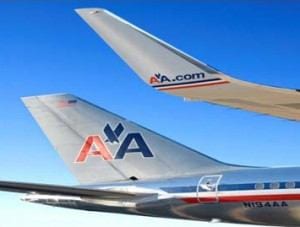Travel News
American Airlines Update: Maintenance Troubles & New Contract Talks?
Since filing for Chapter 11 bankruptcy in November of last year, American Airlines has been fighting to save more than just its net worth. Ongoing contract disputes with its pilots have left the airline struggling to salvage its reputation as well. As the airline has seen increasing numbers of delayed and canceled flights, it seems that the disagreements between American Airlines and the Allied Pilots Association (APA) are to blame. According to Peter Greenberg:
“We’re in a definite gray area here in terms of the pilots’ actions. The union is neither calling for nor officially condoning any sort of a pilot slowdown or work stoppage. In fact, it could be argued that the union leadership may have lost control of its own members here. The pilots that I have talked with are that angry at American management.”
 In a letter to the APA on September 26, Denise Lynn, senior vice president of people at American Airlines, accused the pilots of “engaging in an unlawful, concerted effort to damage the Company” in the following ways: “delaying departures for unnecessary checks, increased and late-filed maintenance write-ups, increased block times due to slow taxiing, and circuitous routings.”
In a letter to the APA on September 26, Denise Lynn, senior vice president of people at American Airlines, accused the pilots of “engaging in an unlawful, concerted effort to damage the Company” in the following ways: “delaying departures for unnecessary checks, increased and late-filed maintenance write-ups, increased block times due to slow taxiing, and circuitous routings.”
But the APA maintains that the pilots are just doing their job. APA President Keith Wilson reiterated, “Failure to place a mechanical discrepancy in the maintenance logbook can result in a revocation of a pilot’s license by the Federal Aviation Administration, not to mention the fact that it could result in a serious safety risk.”
And this past week has seen several safety scares. On Tuesday, Flight 1862 was forced to make an emergency landing 10 minutes after takeoff because the plane’s landing gear jammed. While passengers are happy to be safe, some are already questioning if the scenario was real or if it was a job action.
American Airlines has also experienced loose seats on three flights with two planes. In two out of three instances, planes were force to make emergency landings. The airline stated that the seat malfunctions were due to clamps that were incorrectly installed during maintenance work by American crews and by Timco Aviation Services, an outside contractor. In response to the seat issue, American has inspected and fixed the seats on 36 of its Boeing 757 jets. There are plans to check 11 other planes.
Peter noted:
“The airline seat issue is just the latest flashpoint in management-labor relations at American Airlines, because if American is to be believed, that the mistakes in installing the seats were made by an outside company. It bolsters the union position that American, by outsourcing the work without proper oversight, was just trying to save even more money and putting passengers at risk. Remember that American was claiming, as recently as last year, and claiming proudly, that it outsourced NO maintenance work to anyone, that it was all done by American workers at its huge Tulsa base. In fact, before the bankruptcy filing the American maintenance base in Oklahoma made American the state’s largest private employer. When the airline filed for Chapter 11 protection last November, it announced — as part of its restructuring plans — to lay off more than 3,000 maintenance workers from Tulsa. And apparently, started outsourcing some work.”
In light of the abundance of reported maintenance issues, Peter stresses that despite the hassle of having flights be delayed and canceled, travelers choosing American Airlines remain safe:
“I honestly believe that no airline employee would knowingly allow an unsafe plane to go into service. It’s a convenience issue—but some pilots are intentionally going by the book. With the exception of some new 737s and some 777s, American has an aging fleet that requires more maintenance with or without any labor issues.”
 According to American Airlines, these pilots’ decisions to go by the book have resulted in maintenance reports being filed for problems such as torn seatback pockets and broken coffee pots. And when a report is filed, the problem must be addressed before takeoff, causing the number of delayed flights to spike.
According to American Airlines, these pilots’ decisions to go by the book have resulted in maintenance reports being filed for problems such as torn seatback pockets and broken coffee pots. And when a report is filed, the problem must be addressed before takeoff, causing the number of delayed flights to spike.
Not surprisingly, the APA cites vastly different reasons for keeping planes grounded, including hydraulic leaks in the main landing gear, premature fuel burn indications, and broken pilot oxygen masks.
An anonymous American Airlines pilot, who reached out to Dallas Morning News aviation business reporter Terry Maxon, likened the situation to a car owner calling a mechanic as soon as the windshield wipers begin to streak or they spot an oil leak on the driveway. He claims that while pilots used to try to troubleshoot the system themselves, they have begun immediately writing up any problems instead.
Peter explains:
“It’s beyond a convenience or safety issue: it’s a dollars and cents challenge. When the airline suffers a 50 percent on-time problem, those are serious dollars we’re talking about—ranging from fuel burn to misconnected passengers and bags, followed by a growing number of passengers booking away from American. Sooner rather than later, we’ll reach the point of diminishing returns, and with any luck at all this will end. But what won’t end is the acidic nature of management-labor relations at American.”
In the end, while American Airlines’ aging planes might very well be an issue (as evidenced by the three flights in the past week that were grounded due to seats coming loose mid-flight), their real problems need to be solved in negotiations with the APA. Fortunately, the union’s board members announced Tuesday that they are willing to resume contract talks with the airline—and that the results of the union’s strike-authorization vote will be withheld pending the progress of the upcoming round of negotiations.
For more American Airlines’ labor trouble and bankruptcy proceedings, check out:
- Peter’s CBS This Morning Report New Trouble With American Airlines and our news report American Airlines vs. the Pilots What’s Really Going On
- Peter’s Blog: What a U.S. Airways & American Airlines Merger Would Mean and Peter’s U.S. Airways & American Airlines Merger
- Peter and Terry Maxon look Behind the Scenes of American Airlines’ Bankruptcy
- Peter’s Travel Detective blog on American Airlines’ Bankruptcy, Mileage Programs & Industry Changes
By Alex Francis for PeterGreenberg.com












